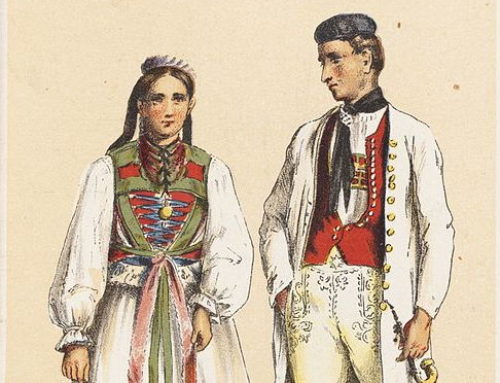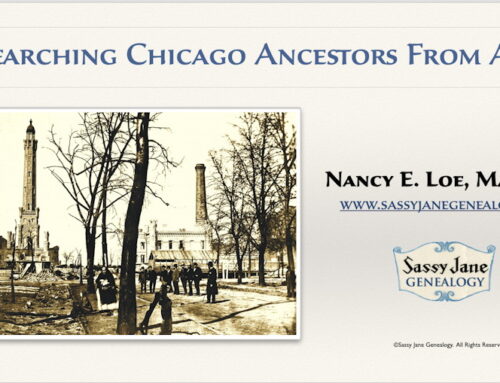Ancestry shaking leaf vs. genealogy brick wall.
Which is mightier?
As it turns out, the Ancestry shaking leaf* is mightier than my ten-year-old Austrian brick wall. Now a leafy branch sprouts in its place on my tree. You may want to get a snack – or better yet a sleeping bag – for this long post about one special Ancestry shaking leaf popping up in my tree and the unusual records I found along the way looking for my elusive Austrian Hanns.
1. Romania, Vital Records from Selected Regions, 1607-1914
This new-to-me Ancestry database contained a hint for a marriage record for Nothburga Schenk and Johann Georg Hann in 1852. Those are my Austrian great-great-grandparents’ names. The date is right. But the place is crazy – 1300 kilometers away in Romania. This can’t be right. But then again, how many Nothburga Schenks were there in the world?
Does the Nothburga Schenk in this record match the person in my tree?
Nothburga and Johann Georg’s son, my great-grandfather Gottfried Hann, was mysterious at first. He never appears in the U.S. census because he arrived in Chicago after 1880. He died in 1896, two months before my grandmother was born. All my father knew was that his grandfather was Austrian, wore lederhosen on holidays, and his name was either Mannfred or Gottfried.
2. Cemetery Research
From Gottfried Hann’s Cook County death record, I learned Gottfried died in Chicago at the age of 35 on 17 Oct 1896. He was buried the following day at St. Boniface Catholic Cemetery in a term (rented) grave. When the family didn’t have the money to purchase the plot at the end of the rental period, the church buried his body deeper and resold the plot. The parish records had no entry for a funeral. On 30 Dec 1896, his posthumous daughter, my grandmother was born, leaving my Swedish great-grandmother, Anna Lovisa Hann, with three children under the age of five to raise on her own.
3. Courthouse Research
On a trip to the Midwest, I detoured to the Upper Peninsula of Michigan to do courthouse and parish research for his marriage. The Catholic Church did not allow access to their parish records, but a nun helped by writing down an abstract of the marriage record. The county also had a record of the marriage and the birth of their firstborn. But neither record revealed a birthplace for Gottfried.
No death notice appeared in the Chicago English-language papers, so I used Gottfried’s death date to find an obituary in a Chicago German-language newspaper. Finally, I had a birthplace at last: Ladis in the Tyrolean region.
5. Professional Genealogist in Austria
The Hanns were Austrians Catholics whose records are unavailable in the U.S. So I hired the professional Genealogin Mag. Julia Pfeifer of the firm Historikerkanzlei Genealogisch-Historische Recherchen GmbH in Innsbruck.
Three years ago she found many many generations of the Hanns for me in Ladis. She even found a letter in the Innsbruck parish records from the Archdiocese in Chicago notifying the Austrian parish in Ladis that Gottfried had died.
But Gottfried’s mother (and my great-great-grandmother) Nothburga Schenk remained a mystery. Also, there was no baptism record for Gottfried in Ladis. But there was a confirmation record. Here the story stops for three years. Until….
Ancestry Shaking Leaf Appears
 In the Ancestry.com Romanian database, I finally found my great-grandfather Gottfried’s elusive baptism record. He was born on 2 May 1861 in Anina, Caraș-Severin, Austro-Ungaria (now Romania). I also found the baptisms of Gottfried’s siblings: Ignatius, Maria Aloisia, and Johannes.
In the Ancestry.com Romanian database, I finally found my great-grandfather Gottfried’s elusive baptism record. He was born on 2 May 1861 in Anina, Caraș-Severin, Austro-Ungaria (now Romania). I also found the baptisms of Gottfried’s siblings: Ignatius, Maria Aloisia, and Johannes.
And then I found Nothburga’s death record. She died at 38 of tuberculosis, leaving four small children and a widower behind in Romania. And her death record (see featured image above) gave the farm and village where she was born in Austria.
Gottfried, his father, and siblings returned to Ladis, Austria, where the Hanns had lived for generations.
I called on professional genealogist Mag. Pfeiffer again. She found Nothburga’s baptism on 27 Dec 1824 in the Schönwies Catholic parish records. That record included names of her parents. Because of discrimination against Romanians in Austria, Leonhard Schenk and Theresia Tragsail journeyed from the Austrian Tyrol to Rome to be married. The fathers of Leonhard and Theresia are recorded. Mag Pfeiffer notes that Leonhard and Theresia moved around a lot and practiced several trades, in addition to being devout Catholics. In the most coded way possible, Mag Pfeiffer was telling me that Nothburga Schenk descended from Romanian travelers.
Suddenly Austrian records that revealed the Schenk side of the family lived outside the town limits made sense.
And a Brick Wall Crumbles
So when this Ancestry match to a Romanian database appeared, I was overjoyed. Three generations of ancestors appeared from behind that brick wall of mine, all found in one day.
So, thank you, Mag. Pfeiffer, for finding records in the Innsbruck diocese for me. Your persistence, skill, and good humor win the day. And thank you Ancestry for the ferocious algorithms that matched my Ancestry tree with that specific database.
Now I have a complete six-generation chart (in six European countries) at last and a complete seventh isn’t too far behind. Join me in the genealogy happy dance!
*Full disclosure: I’ve never been a fan of the Ancestry shaking leaf hints. I’ve seen too many friends and clients use them without understanding them. Result: complete confusion and snarly gnarly trees full of errors. But now I must admit one paid off for me.
For more about using Ancestry shaking leaf hints successfully, click here. And click on the link for more unusual records in genealogy research.








I’m so happy for you!! I completely agree about those shaky leaves being dangerous in the wrong hands. Every now and again they bring me something amazing and correct. But so often they are wrong, wrong, wrong.
Thank you, Amberly. I guess the only way to a real happy dance is to see if the Ancestry leaf is really happy dancing too!
Doing the happy dance with you. FANTASTIC! I do use the shaky leaves. I check the list each day to see if anything new is mentioned on someone I’ve been researching. Those hints have provided many a record for me over the years. Admittedly, I scroll past most of them. But….ignore them..never. And now you’ve given me a brief window of hope for my own 9 brick walls. Thanks so very much for sharing this story. Woohoo!
Thank you Diane! It’s been great not only to find new generations, but also to find something as interesting as Romanians gypsies in my otherwise very boring family tree.
Terrific post, enjoyed every twist and turn! Loved the part your husband played too.
Thanks! And my husband is very handy in cemeteries too. :)
Hi Nancy!
HURRAH!!! Congrats on your brick wall breakthrough; you’ve done a grand job of tracing your nomads. Brava. Gee, now can I send you one of mine? :-)
Best always,
Cari
Thanks, Cari. I knew you’d be interested in my “other” Germans from Austria.
Fantastic…you’ve restored my faith in shaky leaves…or do I mean you’ve generated some faith?
I won’t ignore leaves anymore, but I still think most shaky leaves should become compost. :)
Always nice to see a success story. I’m glad you included the disclosure. People need to be educated about the shaky leaves. They are only hints and, as with any research, need to be carefully analyzed before adding the information to our tree.
Thanks, Cathy, and I agree. The other thing that troubles me about shaking leaves is that it doesn’t build research skills. But I’ll stop now and just be grateful to Ancestry for this one.
Yes, the shaky leaf is very good. But just today, I found what I thought was an helpful shaky leaf and then carefully read the dates for the people named. that tree had a bout three generation of men all married to the same woman! And the dates did not add up right! Tossed the whole idea of that page being at all reliable and helpful!
The majority of my leaves still point to unsourced trees or to information I’ve entered elsewhere, like FindaGrave.
What an encouraging success story! Thanks for sharing it.
Thanks, Judy. Always cheering me on – so appreciated.